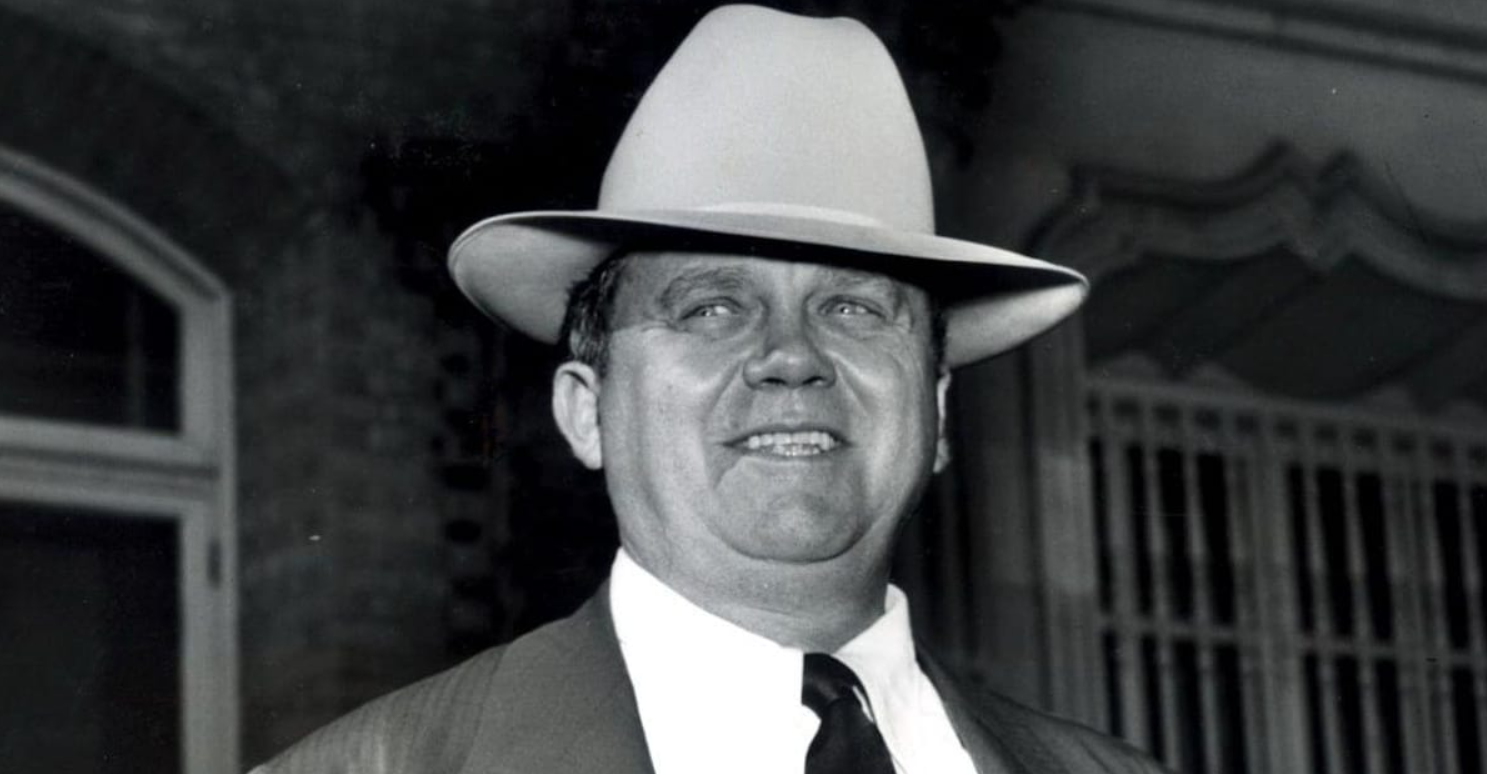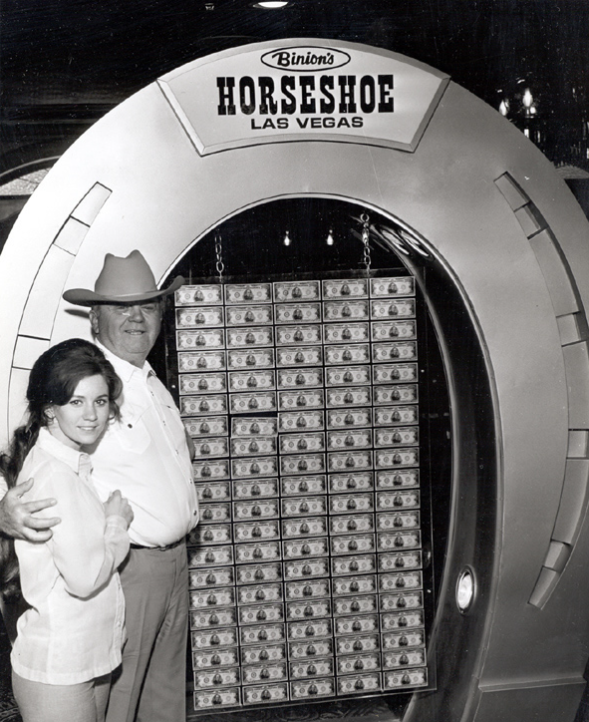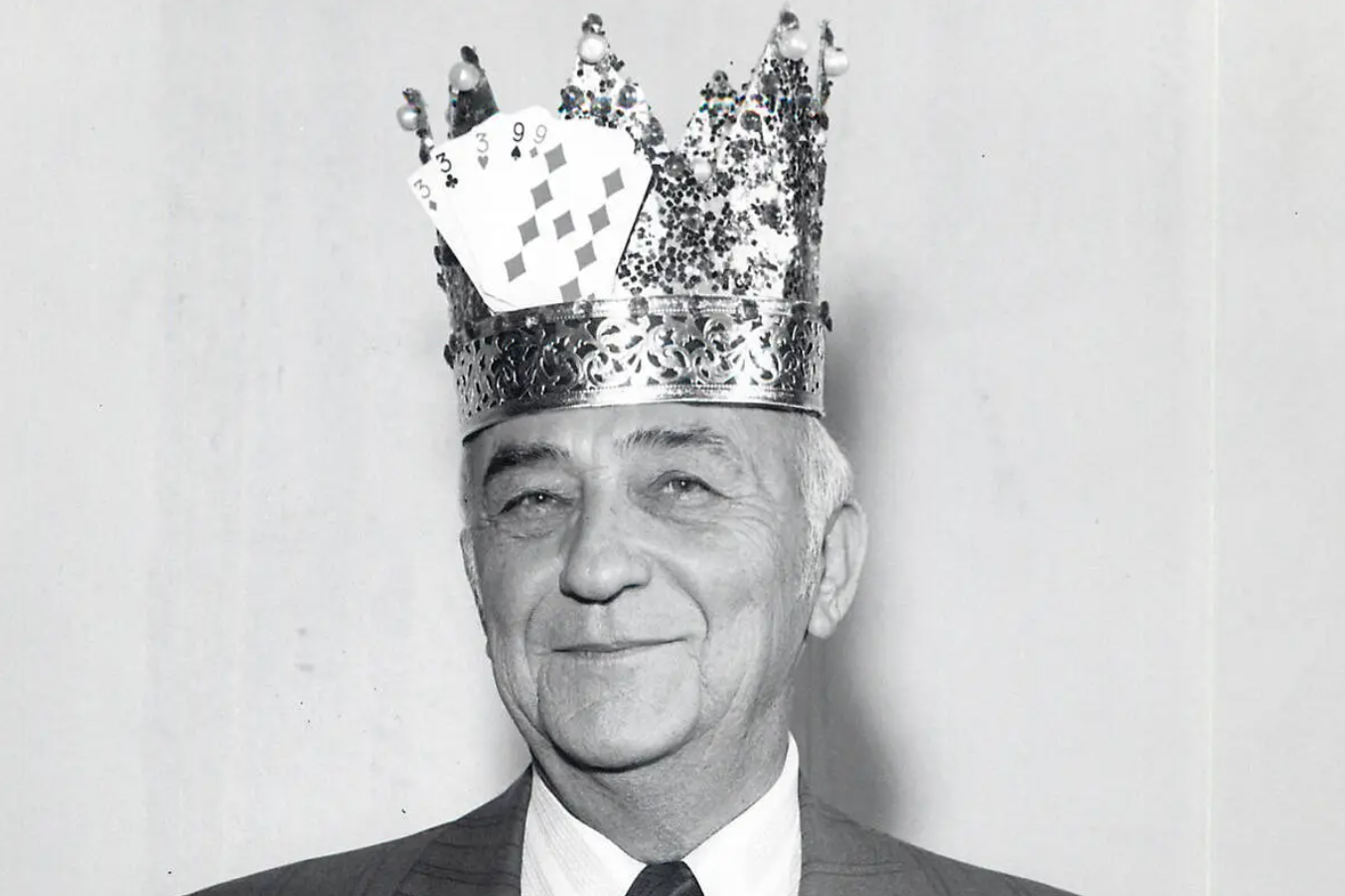1979: Benny Binion and His Grand Vision
The Poker Hall of Fame wasn't born in a stately building but in a noisy, smoky casino. In 1979, Benny Binion, a former cowboy, gambler, businessman, and notably the owner of the legendary Horseshoe Casino in Las Vegas, founded the Hall of Fame as part of his effort to give poker more legitimacy — and a bit of extra publicity.
For Binion, poker was more than just a game. It was a spectacle. At the Horseshoe, he had been organizing the World Series of Poker (WSOP) for years — a creation of his own — and he wanted his venue to be forever linked with the grandeur and history of the game.
Thus, a simple idea was born: showcase portraits of poker's greatest figures right in the casino. Anyone who passed by could admire the legends who shaped the game's history. A place where heritage met commerce—just as Benny liked it.

Poker + Publicity = Poker Hall of Fame
Binion wasn’t just a poker lover; he was a marketing genius. As early as 1964, he created a legendary showcase — a glass case holding a million dollars in cash. He supposedly organized an epic heads-up match between “Nick the Greek” Dandolos and Johnny Moss, considered a historic milestone in poker's popularization.
The Hall of Fame was just another step in his plan — to establish the Horseshoe as the unofficial temple of poker. And it worked. Every player dreamed of having their face framed in gold on the wall among the immortals.

Entry Rules: Who Can Become Immortal?
In the beginning, deciding on members was more about instinct than official criteria. But over time, clear rules have been established, which remain valid today:
-
The minimum age is 40 years. The rule, known as the “Chip Reese Rule,” was introduced in 2011. It's named after the youngest member at the time, Chip Reese, a legendary player inducted in 1991, exactly at the age of 40.
-
You must play at the highest levels and earn respect from peers.
-
You must have consistent results and stand the test of time.
-
Players must play for high stakes.
-
If you're not a player, you must have significantly contributed to poker's growth with indelible positive and lasting results.
From Real Wall to Virtual Form at a Click
After the Horseshoe was sold in 2004, Harrah’s Entertainment (now known as Caesars Entertainment) took over the Hall of Fame. The physical display vanished—along with the charm of walking through the casino gazing at the immortals.
Instead of portraits on the wall, the Hall of Fame became purely “virtual.” However, this doesn't mean it lost significance — quite the opposite. It remains the most prestigious list of names that have shaped poker. After nearly 20 years, the HoF returned to a physical form when a display dedicated to the Poker Hall of Fame opened in 2023 at the Horseshoe Las Vegas hotel.

An interesting change in the process of approving new members occurred in 2009. In an effort to increase public interest, fans were given the chance to nominate their favorites online. However, the final decision lies with living Hall of Fame members along with a selected WSOP committee. While in the past, up to two members were added, since 2020, the number has been reduced to one per year. Debates about who is “ready” and who is “not yet” are an annual ritual in the poker community, along with opinions on whether more personalities should be inducted yearly.
The First Seven Immortals Back in 1979
When Benny Binion announced the creation of the Poker Hall of Fame in 1979, he needed to fill it with something or someone. He decided to start with seven figures he believed embodied the spirit of poker and its history. This original lineup is a mix of gaming legends, businessmen, and historical figures inseparably linked with the game.
Among the first immortalized were Johnny “The Grand Old Man of Poker” Moss, Nick “The Greek” Dandolos, Felton “Corky” McCorquodale, Red Winn, Sid Wyman, Edmond Hoyle, and James Butler “Wild Bill” Hickok.
Today, the Poker Hall of Fame boasts over 60 members, proof of the incredible depth and diversity of the game. We are preparing separate articles about each of these greats, where you can learn more about their lives, careers, and contributions to the poker world.

More Than Just a Title
Being in the Poker Hall of Fame isn't just about the number of bracelets and titles. It's about impact, legacy, character, and the ability to leave an indelible mark on the game. The Hall of Fame is proof that poker is culture, community, and heritage. Binion wanted poker to be remembered. And thanks to these legends, we will never forget.
Source: Wikipedia, Wikimedia Commons, WSOP, Caesars Entertainment, Pokerlistings




